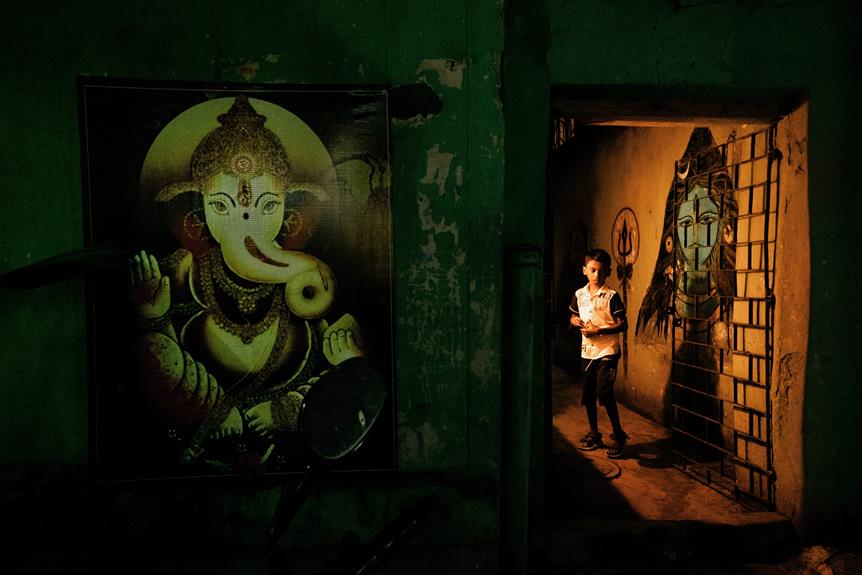Discovering the best martial art for children is a crucial decision for parents seeking to foster physical and mental growth.
Amongst the various options available, Brazilian Jiu-Jitsu (BJJ) emerges as a prominent choice. With its emphasis on safety, injury prevention, and controlled techniques, BJJ provides a secure grappling experience for young practitioners.
Moreover, BJJ's belt system promotes achievement, perseverance, and goal-setting, while its effectiveness in self-defense situations and adaptability to all sizes make it an ideal martial art for kids to learn.
Key Takeaways
- BJJ is one of the safest martial arts for kids, with minimal risk of head injuries and a safe environment for grappling.
- The belt system in BJJ provides a clear path of achievement, teaching kids the value of hard work and consistency.
- BJJ offers self-defense benefits, empowering kids to protect themselves and gain confidence.
- BJJ is suitable for kids of all sizes, emphasizing technique and skill over physical advantages.
Safety and Injury Prevention in BJJ
Safety is a paramount concern in Brazilian Jiu-Jitsu (BJJ) for kids, with a focus on injury prevention measures. While BJJ is generally considered a safe martial art, it is important to be aware of common injuries and take necessary precautions to prevent them.
Common injuries in BJJ include strains, sprains, joint injuries, and bruises. To prevent these injuries, safety measures and protocols are implemented in BJJ for kids. These measures include using soft mats and padded walls to provide a safe environment for grappling, wearing appropriate attire like a gi to prevent injuries, and ensuring that submissions are controlled, with tapping out as a means to ensure safety.
Additionally, BJJ for kids does not involve weapons, making it one of the safest martial arts for children. By following these safety measures and protocols, kids can enjoy the many benefits of BJJ while minimizing the risk of injuries.
Achievement and Progression in BJJ
To further enhance the learning experience in Brazilian Jiu-Jitsu (BJJ) for kids, the achievement and progression aspect plays a pivotal role, encouraging them to set personal goals and consistently work towards them.
BJJ utilizes a belt system that provides a clear path of achievement, allowing kids to track their progress and feel a sense of accomplishment as they advance through the ranks. This system not only instills discipline and dedication but also teaches the value of hard work and perseverance.
Setting goals in BJJ not only helps kids develop a focused mindset but also builds discipline through consistent training. By working towards specific objectives, children learn the importance of commitment, time management, and overcoming challenges.
These valuable life skills extend beyond the mat and can positively impact various aspects of their lives.
Self-defense Benefits of BJJ
Additionally, the self-defense benefits of BJJ for kids extend beyond physical techniques, empowering them to protect themselves in various real-life situations.
Here are three key reasons why BJJ is an effective self-defense martial art for children:
- BJJ self-defense techniques: BJJ focuses on grappling and submission holds, teaching children how to control and neutralize aggressors without relying on striking or causing harm. These techniques enable kids to defend themselves effectively, especially in bullying situations where physical confrontation may be unavoidable.
- BJJ for building confidence: Through BJJ training, children gain confidence in their abilities to defend themselves. They learn to trust their instincts, make quick decisions, and stay calm under pressure. This newfound confidence extends beyond self-defense, positively impacting their interactions with peers and promoting assertiveness in all areas of life.
- Transferable skills: The self-defense skills learned in BJJ can be applied in various real-life situations, providing children with a sense of security and peace of mind. Whether it's navigating challenging social situations or standing up for themselves and their friends, BJJ equips kids with the tools to handle conflicts effectively and assertively.
BJJ not only teaches children how to physically protect themselves but also instills valuable life skills that promote confidence, resilience, and personal safety.
Suitability for Kids of All Sizes
BJJ's inclusivity and emphasis on technique make it suitable for kids of all sizes and body types. Unlike other martial arts that heavily rely on size and strength, BJJ focuses on skill, strategy, and timing. This means that even smaller kids can effectively utilize technique to overcome physical disadvantages.
BJJ's technique diversity allows kids to learn a wide range of moves and positions, enabling them to adapt to different opponents and situations. Additionally, BJJ promotes physical development in children as they engage in grappling, which enhances their strength, flexibility, and coordination.
Benefits of Competition and Sparring in BJJ
Competition and sparring in BJJ provide essential opportunities for kids to further develop their skills and apply their techniques in realistic scenarios. Here are three key benefits of competition and sparring in BJJ for kids:
- Improving problem-solving skills: In a competitive environment, kids are challenged to think quickly and strategize on their feet. They must analyze their opponent's movements and find effective ways to counter and overcome obstacles. This enhances their problem-solving abilities and trains them to make split-second decisions.
- Building mental resilience: Competition and sparring in BJJ can be physically and mentally demanding. Kids learn to push through challenges, face adversity, and persevere. This builds mental toughness and resilience, qualities that are invaluable both on and off the mat.
- Enhancing adaptability: Sparring in BJJ exposes kids to different styles, techniques, and body types. They learn to adapt their strategies and techniques accordingly, becoming more versatile and adaptable in their approach. This adaptability carries over to other areas of life, allowing them to navigate various situations with ease.
Overall Benefits of BJJ for Kids
The overall benefits of BJJ for kids extend beyond physical skills, fostering personal growth and character development. BJJ instills discipline and focus in young practitioners, teaching them the importance of commitment and perseverance. Moreover, it provides a platform for building strong friendships and camaraderie. Through the shared experience of training and competing together, children develop a sense of belonging and teamwork. To further illustrate the impact of BJJ on kids, consider the following table:
| Benefits of BJJ for Kids |
|---|
| Improved Discipline and Focus |
| Building Strong Friendships and Camaraderie |
| Personal Growth and Character Development |
Improved discipline and focus in kids through BJJ is achieved through the structured training environment, where students learn to follow instructions, respect their instructors, and concentrate on their techniques. Building strong friendships and camaraderie in BJJ for kids is facilitated by the collaborative nature of the sport, as children support and encourage each other during training and competition. Overall, BJJ provides a holistic approach to martial arts training, nurturing not only physical skills but also important life qualities in young practitioners.
Frequently Asked Questions
Are There Any Age Restrictions for Kids to Start Learning Bjj?
There are no strict age restrictions for kids to start learning BJJ. However, it is important to consider the child's physical and emotional readiness. Starting age can vary, but many children begin around 5 or 6 years old.
How Can BJJ Help Improve a Child's Focus and Discipline?
BJJ helps improve a child's focus by requiring constant attention to technique and positioning. It develops discipline through the structured training environment, where respect, perseverance, and self-control are emphasized.
Is It Necessary for Kids to Compete in BJJ Tournaments to Progress in the Sport?
While competing in BJJ tournaments can enhance skill development and provide motivation for kids, it is not necessary for progression in the sport. Alternative martial arts may offer different avenues for improvement and growth. Consider the pros and cons for each approach.
How Can BJJ Benefit a Child's Mental Health and Emotional Well-Being?
BJJ benefits a child's mental health by enhancing self-esteem through achievement and progression. It also improves social skills as kids interact with training partners, fostering teamwork, communication, and respect.
Are There Any Specific Safety Measures in Place to Prevent Injuries During BJJ Training?
Safety measures in BJJ for kids are crucial in preventing injuries during training. Measures such as soft mats, padded walls, and proper attire help create a safe environment. Controlled submissions and the absence of weapons make BJJ one of the safest martial arts for kids.
Conclusion
In conclusion, Brazilian Jiu-Jitsu (BJJ) emerges as the best martial art for children to learn due to its emphasis on safety, achievement, self-defense, and inclusivity.
With its focus on injury prevention and a controlled training environment, BJJ ensures a secure grappling experience for kids.
Moreover, the belt system in BJJ promotes goal-setting and perseverance, while its effectiveness in self-defense situations and suitability for kids of all sizes make it a versatile choice.
Lastly, competition and sparring in BJJ further enhance skill development, making it an all-encompassing martial art for children.
- 15 Best Martial Arts Weapons (Fighting & Training) - October 14, 2024
- Is Fencing a Martial Art? (Yes, 4 Reasons Why) - October 14, 2024
- 7 Best Martial Arts for Self-defense Ranked (Highly Effective) - October 14, 2024










